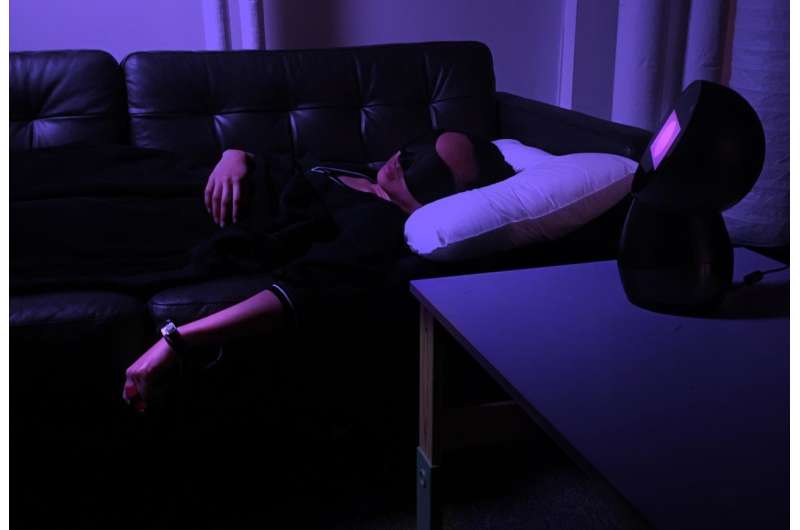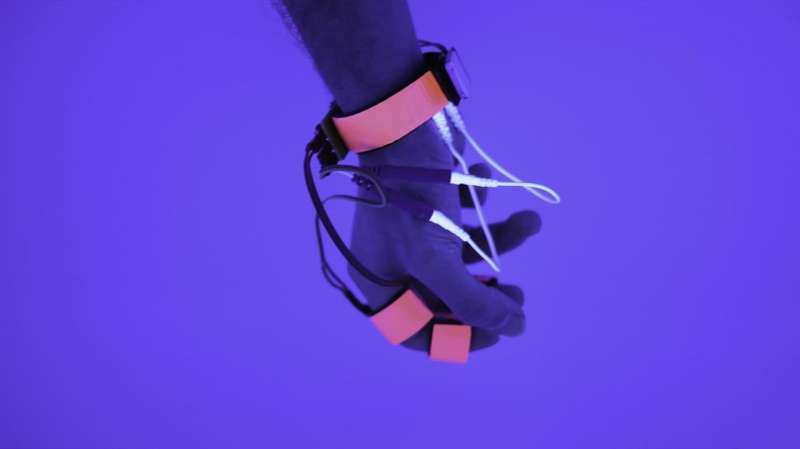Using Dormio you fall asleep as you normally would, but the transition into stage 2 sleep is tracked and interrupted. This suspends you in a semi-lucid state where microdreams are inceptable, allowing direction of your dreams. Credit: Fluid Interfaces
A team of researchers at MIT has created a hand-worn device that they claim can influence a person's micro-dreams during hypnagogia. The group has announced their device by posting a page describing it on an MIT website. The group is scheduled to present their device at the Computer-Human Interface conference this week.
According to the team, the device works by offering access to the mind during the period just before sleep sets in. Called hypnagogia, the semi-lucid state has been heralded by many of the great minds in history as a period of greater creativity. Thomas Edison famously attempted to make use of it by grasping a steel ball as he was falling asleep. As he entered hypnagogia, his grip would loosen and the ball would drop to the floor, jarring him awake. At that point, he would scribble down notes regarding where his mind had wandered.
Prior research has shown that people experience hypnagogia differently—some appear to be asleep, whereas other people in this state speak. Also, some report having what they describe as normal, but short dreams, while others report hallucinogenic experiences. In any case, the team at MIT has developed a more high-tech version of the steel ball, which they have called Dormio—the Italian word for sleep.
The device is a glove fitted with sensors that detect when a person enters hypnagogia. When it happens, a message is played from a smartphone. Generally, the message is a single word. The person is then allowed to fall back into hypnagogia, whereupon they engage in micro-dreams. Volunteers testing the system report that those micro-dreams had themes aligned with the word that was spoken from the smartphone.
The point of Dormio, just like Edison's steel ball, is to help people tune into the creative part of the mind during hypnagogia,—but to do it in a way the user can control. Doing so, the researchers suggest, will not only allow people to tap into hypnagogia, but to direct what goes on and remember it.
The researchers report that they are still working on the system. Thus, it is not available for sale to the public.
During sleep onset, a window of opportunity for interfacing with sleep arises in the form of hypnagogia, a semi-lucid sleep state where we all begin dreaming before we fall fully unconscious. Credit: Oscar Rosello
More information: www.media.mit.edu/projects/sle … creativity/overview/
© 2018 Tech Xplore
























